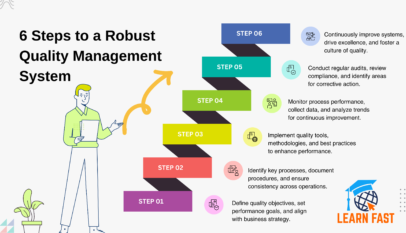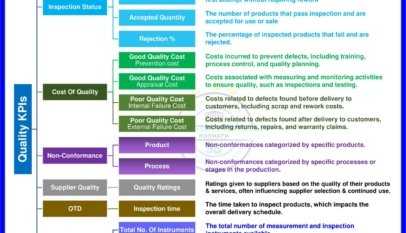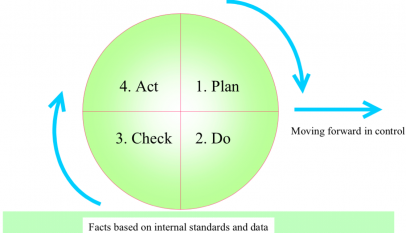Leader Standard Work (LSW) is an essential component of Lean management. It is a set of documented and standardized daily routines and behaviours that guide leaders in their roles, ensuring they consistently deliver value to their organizations. LSW drives continuous improvement and fosters a culture of team engagement and accountability (Dombrowski & Mielke, 2013).
This professional blog post aims to provide an in-depth understanding of LSW, its importance, and how to implement it within an organization effectively. We will discuss the key principles and strategies to help you begin your LSW journey and improve your organization’s performance.
- Understanding Leader Standard Work
LSW is a method for leaders to consistently perform tasks that add value to the organization and support the development of a Lean culture. It involves setting expectations, defining routine activities, and monitoring performance (Mann, 2009). By focusing on these tasks, leaders can drive continuous improvement, facilitate problem-solving, and promote a culture of accountability.
One of the critical aspects of LSW is that it is a living document that evolves as the organization grows and changes. As leaders learn and improve, they update their LSW to reflect these changes, ensuring that they are always focusing on the most critical tasks and behaviours (Higgins, 2016).
- The Importance of Leader Standard Work
LSW offers several benefits to organizations, including:
a. Improved consistency and predictability: LSW helps leaders establish a routine and ensures that they consistently perform essential tasks, leading to improved stability in the organization (Higgins, 2016).
b. Increased accountability: LSW holds leaders accountable for their actions and performance, fostering a culture of responsibility and engagement (Dombrowski & Mielke, 2013).
c. Enhanced problem-solving and decision-making: LSW encourages leaders to spend time on the shop floor, allowing them to identify problems and implement solutions in real time (Mann, 2009).
d. Fostering a culture of continuous improvement: LSW drives leaders to focus on improvement activities, promoting a culture of learning and growth within the organization (Emiliani, 2008).
- Getting Started with Leader Standard Work
Implementing LSW in your organization involves the following steps:
a. Assess your current situation: Begin by evaluating your current leadership practices and identifying gaps or inconsistencies in your daily routines (Mann, 2009).
b. Develop your LSW template: Create a document that outlines your daily, weekly, and monthly tasks, focusing on activities that drive value and align with your organization’s objectives (Higgins, 2016).
c. Implement and monitor: Share your LSW with your team and begin following the defined routines. Regularly review your performance and adjust your LSW as needed (Dombrowski & Mielke, 2013).
d. Continuous improvement: Continually refine your LSW based on feedback, new learning, and changing organizational needs (Emiliani, 2008).
- Key Principles of Successful Leader Standard Work
To ensure the success of your LSW implementation, consider the following principles:
a. Focus on value-adding activities: Your LSW should prioritize tasks that directly contribute to the organization’s goals and improve its performance (Mann, 2009).
b. Ensure visibility and transparency: Share your LSW with your team and other stakeholders, promoting a culture of openness and accountability (Higgins, 2016).
c. Engage in regular reflection and adjustment: Assess your LSW, making adjustments as needed to respond to changing circumstances and ensure continuous improvement (Dombrowski & Mielke, 2013).
d. Develop leadership capabilities: Encourage leaders to continually develop their skills and knowledge, ensuring they are equipped to perform their LSW effectively and drive organizational success (Emiliani, 2008).
e. Foster a culture of continuous improvement: Encourage all team members to engage in improvement activities and share their insights, ensuring that the organization continually evolves and grows (Mann, 2009).
Conclusion
Leader Standard Work is a powerful tool that can transform your organization’s performance and culture. By implementing LSW, leaders can establish consistent routines, promote accountability, and drive continuous improvement. To ensure the success of your LSW journey, focus on value-adding activities, maintain transparency, regularly assess and adjust your LSW, develop leadership capabilities, and foster a culture of continuous improvement.
References:
Dombrowski, U., & Mielke, T. (2013). Lean Leadership – Fundamental Principles and their Application. Procedia CIRP, 7, 569-574. https://doi.org/10.1016/j.procir.2013.06.061
Emiliani, M. L. (2008). Standardized work for executive leadership. Leadership & Organization Development Journal, 29(1), 24-46. https://doi.org/10.1108/01437730810845244
Higgins, J. (2016). The importance of leader standard work in a lean management system. Retrieved from https://www.lean.org/the-lean-post/articles/leader-standard-work-where-to-start/
Mann, D. (2009). The Missing Link: Lean Leadership. Frontiers of Health Services Management, 26(1), 15-26. Retrieved from https://pubmed.ncbi.nlm.nih.gov/19891214/
















